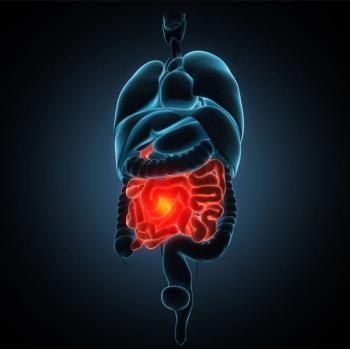
Upper GI Bleeds: Repeat Endoscopy vs Non-Endoscopic Management After Hemostatic Failure
Results of a first-of-its-kind study announced at ACG 2015 compare the results of 2 common approaches to stop rebleeding after endoscopic intervention.
Hospital admissions for non-variceal upper gastrointestinal bleeding (NVUGIB) have decreased steadily over time, with some of the decline attributed to elucidation of the role played by Helicobacter pylori and resulting treatments. However, upper GI bleeding remains a significant source of morbidity and mortality. As the number and availability of anticoagulant regimens continue to expand, high risk patients from your primary care practice are likely to be admitted for a bleeding event.
What happens after admission is not always straightforward. Rebleeding after initial endoscopic hemostatic control is achieved is not uncommon. So what is the optimal approach?
New research1 presented at the 2015 American College of Gastroenterology Scientific Session by Sunguk Jang, MD, department of gastroenterology and hepatology, Cleveland Clinic, Cleveland, Ohio, has begun to answer this difficult clinical question.
Consensus recommendations currently recommend visceral arteriography with embolization when endoscopic hemostasis has failed.2 Similarly, American College of Gastroenterology Practice Guidelines promulgated by Laine and Jensen in 20123 recommend surgery or angiographic embolization if further bleeding occurs after a second endoscopic therapeutic session. However, these are conditional recommendations at best and there is considerable uncertainty regarding the trade-offs. That is, there is a paucity of direct comparative data to support endoscopic therapy over angiographic embolization/surgery with recurrent NVUGIB.
In the novel study, “The comparative effectiveness of endoscopy vs angiography or surgery in recurrent non-variceal upper GI bleeding” Jang et al looked at whether endoscopy or angiography/surgery provided a hemostatic advantage at the first recurrent event with primary endpoints of hemostasis and 30-day mortality.
Consecutive patients admitted to the ICU between 2008 and 2011 at the Cleveland Clinic Foundation who underwent upper endoscopy (EGD) for the initial evaluation of NVUGIB were eligible for inclusion. Rebleeding was defined as NVUGIB following index endoscopic therapy within 30 days of initial bleed. Patients with recurrence were subsequently stratified as to whether they underwent repeat upper endoscopy, angiography and/or surgery.
After excluding patients with evidence of portal hypertension, 249 patients were reviewed. Of these, 107 patients (43%) had recurrent NVUGIB after their initial episode. Patients receiving repeat EGD were 3.5 times more likely to achieve hemostasis after the 1st recurrent event (p=0.025) compared with angiography or surgery. Subjects who underwent angiography/surgery were more likely to have recurrent bleeding events than those who had EGD treatment only (p<.001). However, no mortality benefit was recognized. In addition the hemostatic superiority of endoscopy was lost after the recurrent bleeding event. That is, EGD did not outperform angiography/surgery after the first recurrent episode (3rd bleeding event).
This study is the first of its kind to directly compare the effectiveness of endoscopy vs angiographic embolization/surgery in patients with recurrent NVUGIB. It underscores the possibility of endoscopic hemostatic superiority for the first recurrent event and validates consensus recommendations of repeat EGD as the next step after initial successful hemostasis.
References:
1. Jang S. The Comparative Effectiveness of Endoscopy vs. Angiography or Surgery in Recurrent Non-variceal Upper GI bleeding. Presented at: 2015 American College of Gastroenterology Scientific Session; October 19, 2015; Honolulu, Hawaii.
2. Barkun AN, et al.
3. Laine L, Jensen DM.
Newsletter
Enhance your clinical practice with the Patient Care newsletter, offering the latest evidence-based guidelines, diagnostic insights, and treatment strategies for primary care physicians.

















































































































































































































































































